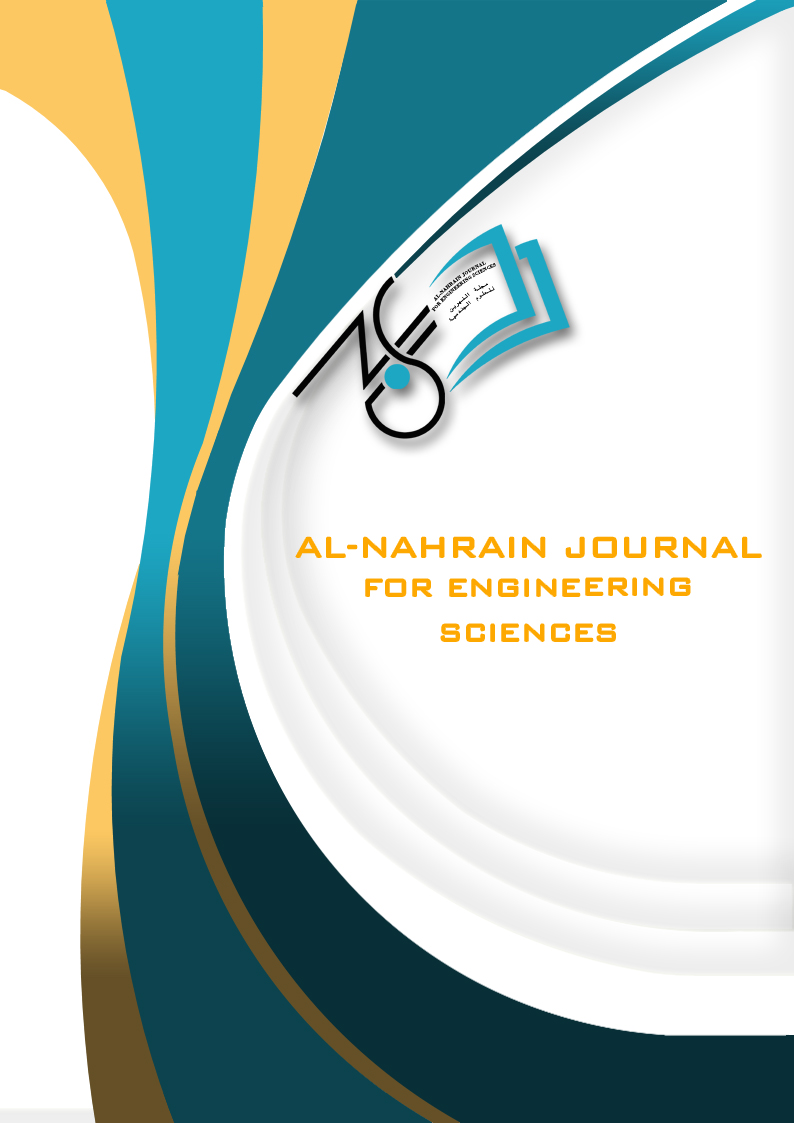The Effect of Human Hair Fibers on the Behavior of Subgrade Clay Soil
DOI:
https://doi.org/10.29194/NJES.28010088Keywords:
Human Hair Fiber, HHF, Liquid Limit, Plastic Limit, CBR test, SoilAbstract
Soil reinforcement techniques have been successfully used to improve the shear properties of weak soils in recent years. To improve the utilization of waste resources and promote sustainable development of infrastructure amid rapid urbanization, one potential option for reinforcement materials is human hair fibers (HHF). Because it is a natural fiber, there are risks to human and environmental health associated with the improper disposal of human hair fiber, an occurring waste product that does not decompose completely. This fabric is abundant, has a high reusability rate, and is ideal for use as a reinforcement to address waste management issues and make the most of inefficient or unnecessary manufacturing websites for long-term sustainability. The CBR test was executed on several samples with diverse fiber possibilities to evaluate the engineering properties of the randomly placed HHF in clayey soil samples using fibers whose average length was 50 mm and whose diameter ranged from 60 to 80 microns and compared the outcomes to those of unreinforced soil. The soil sample was treated with different percentages of Human Hair fiber (0%, 0.75%, 1.5%, 1.75% and 2.25%). The results showed that the value of CBR of the soil sample decrease at 0.75% of HHF and then increased up to 2.25% of HHF.
Downloads
References
R. Sutradhar and V. Suda, "Utilization of human hair fibre to stabilize black cotton soil and contaminated soil," IoP Conf. Ser. Earth Environ. Sci., vol. 982, no. 1, p. 012048, 2022. DOI: 10.1088/1755-1315/982/1/012048. DOI: https://doi.org/10.1088/1755-1315/982/1/012048
A. Fateh, A. Amiri, and N. Malidareh, "Evaluating the performance of human hair impregnated with cement slurry in remediation of the Caspian coastal silty sand," Eng. Res. Express, vol. 2, no. 3, p. 035006, 2020. DOI: 10.1088/2631-8695/ab9004. DOI: https://doi.org/10.1088/2631-8695/ab9004
S. Sharmila, K. Narayanan, and S. Arun, "Experimental investigation of soil reinforced with human hair fibre and chloride compounds," Eng. Res. Express, vol. 1, no. 1, p. 015017, 2019. DOI: 10.1088/2631-8695/ab3166.
M. Orakoğlu, J. Liu, R. Lin, and Y. Tian, "Performance of clay soil reinforced with fly ash and lignin fiber subjected to freeze-thaw cycles," J. Cold Reg. Eng., vol. 31, no. 4, 2017. DOI: 10.1061/(ASCE)CR.1943-5495.0000139. DOI: https://doi.org/10.1061/(ASCE)CR.1943-5495.0000139
X. Yang, Z. Hou, F. Dong, Y. Xiao, and S. Zhou, "Experimental study on strength of polypropylene fiber reinforced cemented silt soil," Appl. Sci., vol. 12, no. 16, p. 8318, 2022. DOI: 10.3390/app12168318.
W. Butt, K. Gupta, and J. Jha, "Strength behavior of clayey soil stabilized with saw dust ash," Int. J. Geo-Eng., vol. 7, no. 1, 2016. DOI: 10.1186/s40703-016-0032-9. DOI: https://doi.org/10.1186/s40703-016-0032-9
H. Zaimoğlu and T. Yetimoğlu, "Strength behavior of fine grained soil reinforced with randomly distributed polypropylene fibers," Geotech. Geol. Eng., vol. 30, no. 1, pp. 197–203, 2011. DOI: 10.1007/s10706-011-9462-5. DOI: https://doi.org/10.1007/s10706-011-9462-5
X. Yang, Z. Hou, F. Dong, Y. Xiao, and S. Zhou, "Experimental study on strength of polypropylene fiber reinforced cemented silt soil," Appl. Sci., vol. 12, no. 16, p. 8318, 2022. DOI: 10.3390/app12168318. DOI: https://doi.org/10.3390/app12168318
K. Mondal, S. Banerjee, S. Dhar, M. Sudarshan, and P. Bhattacharjee, "The impact of human waste hair reprocessing occupation on environmental degradation—a case study from rural West Bengal, India," Environ. Geochem. Health, vol. 42, no. 10, pp. 3157–3170, 2020. DOI: 10.1007/s10653-020-00551-0. DOI: https://doi.org/10.1007/s10653-020-00551-0
M. Son, H. Song, and J. Lee, "Analysis of the strength characteristics of hair fiber reinforced clay soil," J. Korean Geotech. Soc., vol. 31, no. 6, pp. 15–25, 2015. DOI: 10.7843/kgs.2015.31.6.15. DOI: https://doi.org/10.7843/kgs.2015.31.6.15
J. Liu, X. Li, G. Li, and J. Zhang, "Investigation of the mechanical behavior of polypropylene fiber-reinforced red clay," Appl. Sci., vol. 11, no. 22, p. 10521, 2021. DOI: 10.3390/app112210521. DOI: https://doi.org/10.3390/app112210521
R. Sahu, R. Ayothiraman, and G. Ramana, "Effect of waste human hair fibers on shear behavior of sand in dry and saturated conditions," J. Testing Eval., vol. 47, pp. 153–173, 2021. DOI: https://doi.org/10.1520/JTE20170648
S. Kamiya, P. Rajendra Kumar, and V. Ramesh Babu, "Soil stabilisation technique using black cotton soil and human hair fiber," J. Emerging Technol. Innovative Res., vol. 6, no. 6, pp. 81–84, Jun. 2019.
D. Sehra and M. S. Ali Khan, "Soil stabilisation using human hair fiber," Int. J. Creative Res. Thoughts, vol. 8, no. 6, pp. 4706–4708, Jun. 2020.
K. Shankar Narayan and S. Mary Rebekah Sharmila, "Stabilization of clay with human hair fiber," Int. J. Civil Eng. Technol., vol. 8, no. 4, pp. 662–667, 2017.
W. A. Butt, K. Gupta, and S. Bhat, "Soil sub-grade improvement using human hair fiber," Int. J. Sci. Eng. Res., vol. 5, no. 12, 2014.
K. R. Arora, Soil Mechanics and Foundation Engineering, 7th ed., Standard Publishers Distributors, 2020.
S. Singh and V. K. Dwivedi, "Characterization of clay soil reinforced with human fiber for pavement design," Int. J. Sci. Eng. Res., vol. 7, no. 3, Mar. 2018.
T. Elias, S. T. K. Sreekumari, and S. George, "Comparative study of soil stabilization using human hair and lime," J. Emerging Technol. Innovative Res., vol. 7, no. 2, Feb. 2016.
S. M. R. Sharmila, K. S. Narayanan, and S. Arun, "Experimental investigation of soil reinforced with human hair fibre and chloride contents," Eng. Res. Express, Jul. 2019. DOI: https://doi.org/10.1088/2631-8695/ab3166
Downloads
Published
Issue
Section
License
Copyright (c) 2025 Yasser Al Khushally, Yosif Jamal Talib, Al-Zahraa Rashed Nihad, Ehab Abaas Hussein

This work is licensed under a Creative Commons Attribution-NonCommercial 4.0 International License.
The authors retain the copyright of their manuscript by submitting the work to this journal, and all open access articles are distributed under the terms of the Creative Commons Attribution-NonCommercial 4.0 International (CC-BY-NC 4.0), which permits use for any non-commercial purpose, distribution, and reproduction in any medium, provided that the original work is properly cited.














